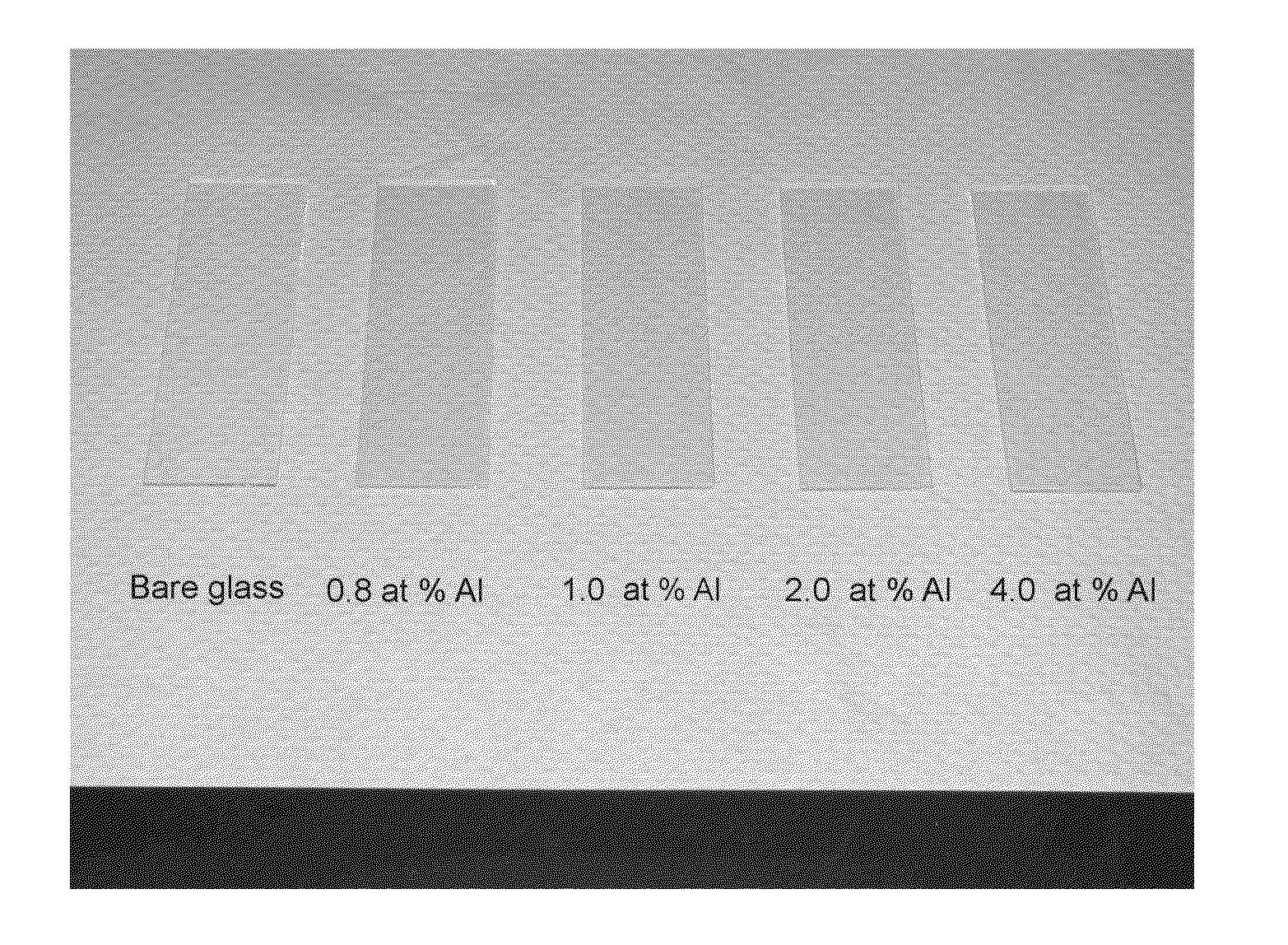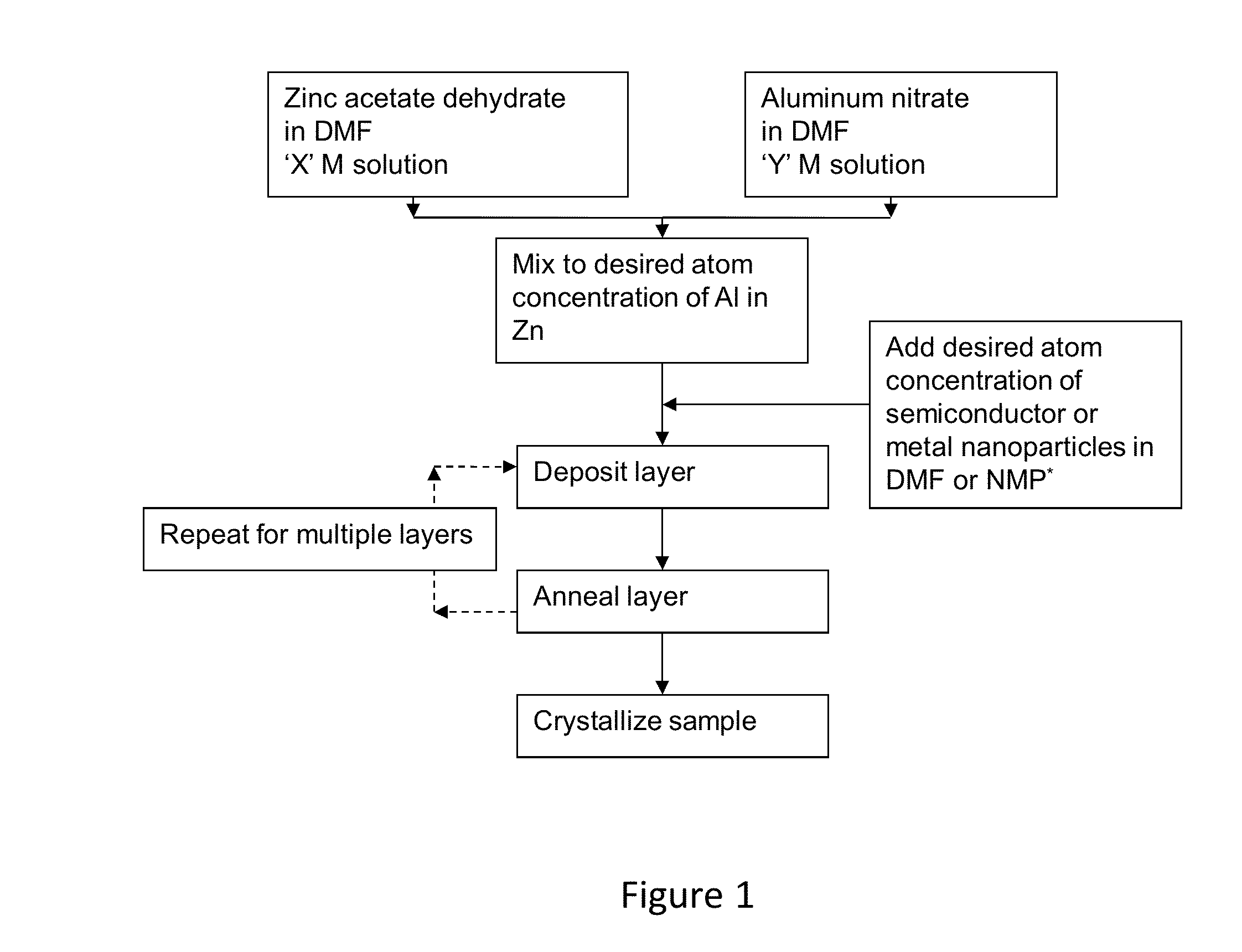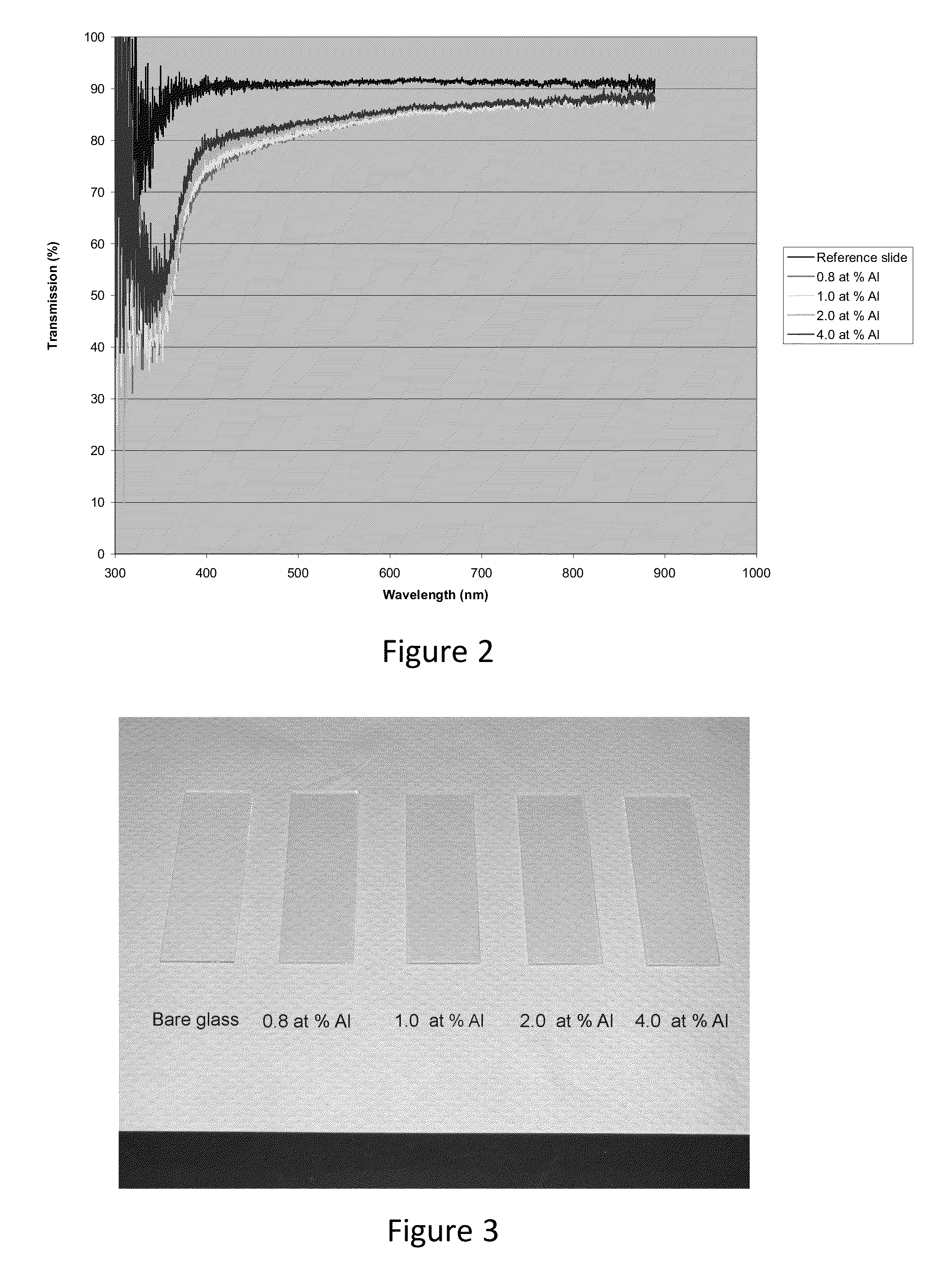Liquid Based Films
a liquid-based film and film technology, applied in the field of liquid-based films, can solve the problems of high cost of vacuum systems, inability to print electronics, and inability to meet continuous processing requirements, and achieve the effect of low cos
- Summary
- Abstract
- Description
- Claims
- Application Information
AI Technical Summary
Benefits of technology
Problems solved by technology
Method used
Image
Examples
Embodiment Construction
[0029]Reference will now be made in detail to the present preferred embodiment(s), an examples of which is / are illustrated in the accompanying drawings. Whenever possible, the same reference numerals will be used throughout the drawings to refer to the same or like parts.
[0030]The present invention may provide one more of the advantages described below.
[0031]The use of aprotic solvents to make a stable ionic TCO film forming precursor solutions, such as, aluminum zinc oxide (AZO) solutions may be valuable to the industry. In addition, the disclosed AZO solutions have not shown any sign of precipitation for several weeks under normal ambient air environment storage. This discovery allows manufacturers ease of use.
[0032]These AZO solutions in aprotic solvents produce highly transparent zinc oxide and aluminum zinc oxide films. Furthermore, the aprotic solvents should provide the same or better degree of stability as any other prospective ionic TCO formers such as tin oxides (SnO2).
[00...
PUM
 Login to View More
Login to View More Abstract
Description
Claims
Application Information
 Login to View More
Login to View More - R&D
- Intellectual Property
- Life Sciences
- Materials
- Tech Scout
- Unparalleled Data Quality
- Higher Quality Content
- 60% Fewer Hallucinations
Browse by: Latest US Patents, China's latest patents, Technical Efficacy Thesaurus, Application Domain, Technology Topic, Popular Technical Reports.
© 2025 PatSnap. All rights reserved.Legal|Privacy policy|Modern Slavery Act Transparency Statement|Sitemap|About US| Contact US: help@patsnap.com



